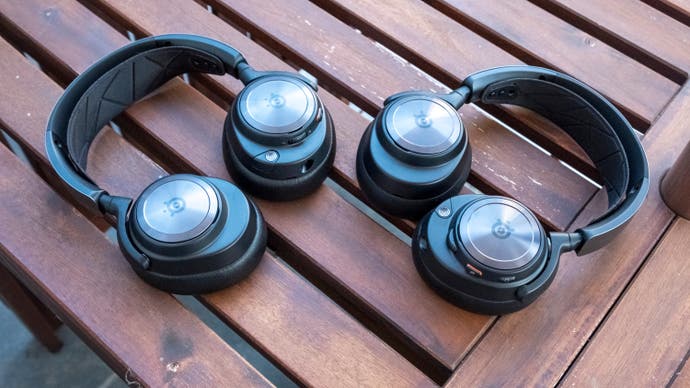Best gaming headset 2024 for PC, PS5, Xbox Series X/S and Switch
The best wired and wireless gaming headsets.
A good pair of headphones is key to victory in many games - particularly shooters like Counter-Strike, Call of Duty and Fortnite - where hearing a single footstep from a wayward enemy could mean the difference between a delicious chicken dinner and an ignoble defeat. That's why we've gathered up our top recommendations for the best gaming headsets for the money on the market right now.
Whether you prefer the lower cost and audio fidelity of wired headphones or the convenience of wireless headsets, we've got you covered. We've also included recommendations for the PS5, Xbox Series X/S, Switch and PC, so no matter what system you game on, you'll be able to find at least a couple of top-tier gaming headsets to consider, each far better than your TV or monitor's built-in speakers. We'll also consider both open-back and closed-back headphones, as the former tend to offer a wider sound stage that's conducive to locating enemies, while the latter minimise sound leakage to ensure you don't bother your flatmates.
Before we get into the recommendations, it's worth mentioning what we'll be looking for when choosing the best gaming headsets. We want a comfortable pair of headphones you can wear for hours without discomfort, perfect for marathon gaming sessions. Sound quality is also key, so that you can hear each sound clearly and become totally immersed in the game. Naturally, you'll need to communicate with your friends or teammates too, so a built-in mic with good noise mitigation is also important. Finally, we also would like to see support for multiple systems, so that if you own a console and a PC, or multiple consoles, you can use the same headset on both.
Best gaming headset 2024
- SteelSeries Arctis Nova Pro Wireless - best wireless gaming headset
- Razer Blackshark V2 / V2X - best wired gaming headset
- Corsair HS80 Max - runner-up, best wireless gaming headset
- Epos H3 Hybrid - runner-up, best wired gaming headset
- Logitech G Pro X Wireless - best PS5 headset
- Xbox Wireless Headset - best Xbox Series X/S headset
- SteelSeries Arctis Nova 5X - best value gaming headset
- Astro A10 Gen 2 - best cheap gaming headset
- Audeze Maxwell - best planar magnetic headset
- Sineaptic SE-1 - best open-back gaming headset
- Sony Inzone Buds WF-G700N - best in-ear gaming headphones
Best wireless gaming headset: SteelSeries Arctis Nova Pro Wireless

The £219/$199 SteelSeries Arctis Nova Pro and £299/$350 Arctis Nova Pro Wireless are the best gaming headsets available, thanks to their excellent sound quality, comfortable design and wide compatibility. These premium headsets supersede the earlier Arctis Pro and Arctis Pro Wireless and represent a significant step forward over what were already competitive options - especially on the wireless model which becomes an all-in-one option with the addition of simultaneous Bluetooth and active noise cancellation (ANC).
Each model comes with a base station with two USB inputs, allowing you to connect to a console and PC, or two consoles, then swap quickly between the two sources. On Xbox versions of the ANP and ANPW, one port supports the Xbox but the headsets are otherwise identical. The base stations also serve as a DAC (for the wired version) and a wireless transmitter / spare battery charger (for the wireless version), with a screen, dial and button used to show sound and battery levels, select and modify EQ settings and so on.
The fabric suspension headband that debuted on the original Arctis headsets returns to provide a comfortable fit, but a new frame design and three headband positions allows the headsets to suit a wider range of head sizes. The athletic foam has been swapped for leatherette to boost bass response and improve passive noise isolation, which together with a higher clamping force ensures the headset remains in position. This clamping force is a bit much out of the box, but soon becomes comfortable even for long gaming sessions. More recently assembled V2 models also have a less prominent ANC mic inside the earcup, solving a comfort issue that affected some people with the original release.
Earcup controls take a step backwards, with no dedicated dial for game/chat mix, but the volume wheel can be pressed in to toggle it between regular volume mode and game/chat mix mode. This is reflected on the base station, so it's easy once you know how to do it. Interestingly, the wireless model has a separate multi-function button for the Bluetooth, so you can turn on the 2.4GHz and Bluetooth sides of the headset independently. It also comes with two batteries, so you can use one while the other is charging in the base station - very smart. ANC is a smart addition, but doesn't quite match dedicated ANC headsets Bose's QuietComfort or Sony's WH-1000XM lines.
In terms of sound, the Arctis Nova Pro stands out. Bass, treble and mids are all well-represented, with extremely good detail and a wide sound stage for a closed back headset. The wired model sounds even better, thanks to a high-end Sabre DAC built into the base station. Microphone performance is also great when SteelSeries' AI noise cancelling feature is used on PC, but merely average otherwise.
These are definitely high-end headsets, but if you can make use of the features - dual inputs, great base stations and wide compatibility - then the Arctis Nova Pro and Nova Pro Wireless are well worth it.
You can read the full Arctis Nova Pro and Nova Pro Wireless review here.
Best wired gaming headset: Razer Blackshark V2X
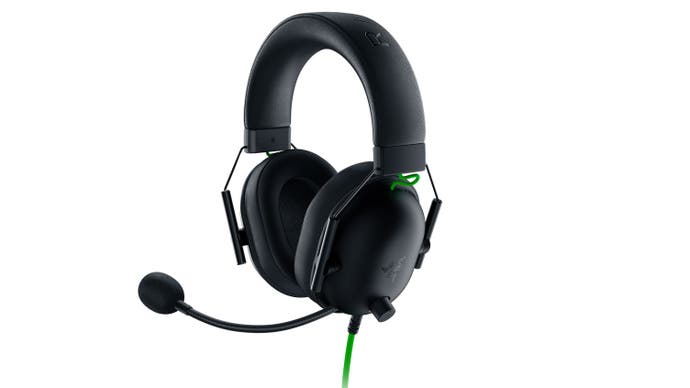
The £43/$48 BlackShark V2 X is the best wired 3.5mm headset for the money we've tested. First, these headphones are a treat to use for gaming or music, with a wide sound stage, accurate sound and good imaging provided by newly designed 50mm drivers that Razer says it'll use for upcoming headsets too. This is a stereo headset, which we recommend for competitive play, but a 7.1 surround sound mode is available via Razer's app or Windows Sonic. The BlackShark V2X's mic is also quite reasonable, although we'd recommend a more professional-grade alternative for streaming.
The design is also worthy of some praise. For starters, the ears are well sealed to block out distracting background sounds - useful whether you're clutching in Valorant or trying to get some work done while working from home with your spouse. The athletic-knit-covered memory foam ear pads remained comfortable for hours, no doubt aided by the light weight of the headset - just 240 grams. There's a convenient volume knob on the left earcup, and the microphone is removable. The BlackShark V2 also lacks any kind of RGB lighting, with only green cables and a subtle Razer logo on each earcup betraying this design's gaming focus.
There's also the £100/$130 BlackShark V2 Pro, which adds wireless connectivity with the same excellent sound and comfort.
Runner-up, best wireless gaming headset: Corsair HS80 Max

The PC and PS5-friendly £135/$180 HS80 Max is my go-to headset these days, as it offers a comfortable design with soft, glasses-friendly fabric ear cushions and a suspension headband, excellent microphone quality and extremely long battery life - up to 65 hours wireless or 130 hours with Bluetooth. The headset is easy to use too, with a flip-to-mute microphone, easy-to-feel buttons and Corsair's powerful iCUE software.
The HS80 Max has a pleasant, neutral response, with the only major criticism being slightly under-developed bass that makes some genres or cinematic moments feel a little lacking. This can be adjusted in the iCUE software on PC, but I was happy enough with the headset on its default setting. The HS80 does get nice and loud, and good sound isolation and imaging makes it easy to listen for enemy footsteps in Counter-Strike 2. On PS5, you can use the console's 3D audio (as with any other USB or 3.5mm headset), while on PC you get a free license for Dolby Atmos while the headset is attached. I don't personally love surround sound for competitive gaming, but for watching films or playing single-player games it works beautifully.
All in all, the HS80 family is a really positive step forward from Corsair in terms of design, outperforming their previous efforts and providing a solid basis for future development, and the HS80 Max is an awesome choice for PC and PlayStation gamers who want a comfortable, low-latency wireless headset.
The HS80 Max is expensive compared to its predecessor, the £125/$120 HS80 RGB Wireless, so you could consider the original model if you're willing to accept more limited battery life (20 hours) and no Bluetooth support; the headsets otherwise perform very similarly.
Runner-up, best wired gaming headset: Epos H3 Hybrid
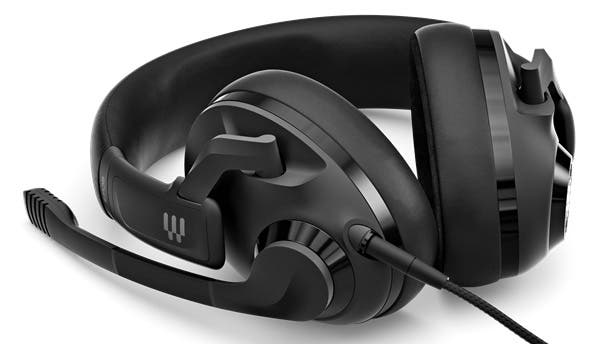
Our runner-up for the best wired headset category is the £50/$60 Epos H3 Hybrid. This headset packs in Bluetooth, USB and 3.5mm connectivity, with impressive neutral sound with bags of detail. The microphone is also one of the best we've heard at this price point. The Hybrid model can use both its wired and Bluetooth connections simultaneously, which is great if you're playing on a console with your friends on Discord or you just fancy listening to your own music.
The industrial design here is great too, proving light and comfortable even while wearing glasses, and despite a more plasticky construction the H3 headsets still feel robust in the hand. The earcup volume dial on the H3 Hybrid has also been improved from the earlier models of the standard H3, which was a bit hard to turn with one finger - this model spins freely. I like the magnetically attached (and therefore easily removable) microphone arm too, which is great if you're playing on PC with an external USB or XLR mic and would prefer a lighter headset.
The Epos H3 Hybrid is an excellent translation of the firm's traditional strengths - audio quality, build quality and comfort - down to a more mainstream price point. For that, the H3 Hybrid deserves our runner-up spot - despite Epos exiting the gaming space in 2023.
Best PS5 headset: Logitech G Pro X Wireless

Our favourite PlayStation headset right now is the £128/$170 Logitech G Pro X Wireless, which uses a 2.4GHz USB dongle to connect to PS5, PS4, PC or Switch (docked). This cross-platform headset offers great comfort for the spectacled and non-spectacled alike, with the option of velour or memory foam ear pads, as well as impeccable build quality with plenty of metal evident. The 50mm drivers inside provide a neutral sound, with a slight emphasis to mids that can help highlight footstep sounds. Surround sound is provided by 3D Audio on PS5 or DTS Headphone:X on PC; I much prefer this arrangement as it tends to provide more consistent results than each headphone maker rolling their own simulated surround solution on the headset itself.
Wireless headphones tend to suffer in mic quality, but the solid hardware here plus the addition of Blue Voice software on PC make this one of the best-sounding options in the category. Battery life is reasonable, at around 20 hours, with easy (if not rapid) USB-C recharging. One area I'd like to particularly highlight is usability; Logitech has done well to incorporate a large number of controls (power, volume, mic mute) onto a single earcup while ensuring each has a distinct feel. Overall, the G Pro X is a great pick for any competitively-minded PS5 or PC gamers.
Best Xbox Series X/S headset: Xbox Wireless Headset
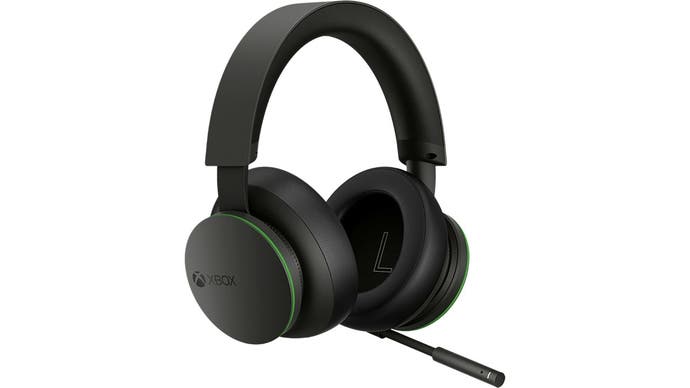
The £90/$90 official Xbox Wireless Headset is the best headset we've tested for Xbox Series X and Series S. It's light and comfortable for hours, has good battery life and boasts easy controls, with each earcup rotating to adjust volume or the game/chat mix. It connects to the Xbox without a dongle, using low latency 2.4GHz wireless, and can also connect to your smartphone over Bluetooth simultaneously - perfect for listening to music or talking on Discord while playing games.
This is by far the cheapest headset to pack in this feature, yet the Xbox Wireless Headset doesn't lack in the fundamentals either, with great (if bass-heavy) sound, good adjustability (with custom EQ settings) and a choice of three surround sound modes (including a free Dolby Atmos trial). See our Xbox Wireless Headset review to learn more, but we're confident that the Xbox Wireless Headset is by far the best value wireless headset for Xbox on the market.
Best value gaming headset: SteelSeries Arctis Nova 5X

The £129/$129 SteelSeries Arctis Nova 5X is one of the best value multi-platform headsets we've tested in a long time, especially for console players who get PS5, Series X/S and Switch support in addition to PC and mobile via (non-simultaneous) 2.4GHz and Bluetooth.
The 5X's secret sauce for console users is an Android and iOS app that provides access to 100+ audio presets for a wide range of specific games, game genres and musical genres. This app worked extremely well in our testing, making it quick and easy to swap presets on any platform, but it does come with some minor limitations - you'll still need to rely on the PC SteelSeries app to create custom EQ presets and install firmware updates, for example. You can see battery life at a glance though, and adjust settings like volume, sidetone and mute LED brightness; there's even an extended range mode that trades microphone quality for a more stable distant connection.
Even in its stock 'flat' EQ, the 5X is a good-sounding headset, with a relatively clear and detailed sound that works well for competitive gaming and many musical genres, but perhaps doesn't sound as rich or exciting as the more premium Audeze Maxwell, Logitech G Pro X 2 Wireless or SteelSeries' own Arctis Nova Pro Wireless. The earcups are comfortable enough, but don't seal as well as SteelSeries' higher-tier offerings or indeed those of their competitors, so you lose a bit of bass definition.
Otherwise, the Nova 5X is a solid headset that ticks a lot of boxes for gaming, including a competent and retractable microphone, a comfortable ski goggle headband and simulated surround sound on PS5, Windows and Xbox consoles. A new wireless chip and an oversized USB-C dongle result in stable wireless performance too - though the wide dongle may block other ports on some PCs or consoles and you therefore may prefer to use the supplied USB-A adapter cable. You don't get the swappable batteries of the more expensive Nova Pro Wireless or the simultaneous 2.4GHz and Bluetooth connections of the Nova 7 and Nova Pro Wireless, but the rated 50-60 hours of battery life feels about right.
It's worth noting that there are three members of the Arctis Nova 5 family, but the Nova 5X is the one you want: it offers Xbox Series and Xbox One compatibility as well as a chat/game mix dial that works on Xbox consoles and PC. The Nova 5 and Nova 5P are the same price, but drop the Xbox support and chat mix dial - and don't gain anything apart from a different-coloured headband.
Best cheap gaming headset: Astro A10 Gen 2

The £47/$50 Astro A10 Gen 2 is one of the most surprising gaming headsets we've tested at Digital Foundry, offering a superb lightweight design, universal wired compatibility and good sound. The headset uses smaller-than-usual 32mm drivers, helping it achieve a weight of just 240 grams (8 ounces for our American friends), which helps it sit comfortably on the head for hours on end. The ear cups are correspondingly a bit smaller, making these more "on-ear" than "over-ear" headphones, but you still get a decent amount of noise isolation and bass reproduction. The overall signature of the headphones is quite neutral, without the bass emphasis that most gaming headsets have, which makes these a better choice for competitive gaming.
In terms of features, there's a decent-sounding flip-to-mute microphone and an inline volume control on the simple black plastic 3.5mm cable; a 3.5mm splitter adapter is provided for PCs. There's no built-in surround sound, as you'd expect from a 3.5mm headset, but you can use surround sound solutions from Sony and Microsoft on PS5, Xbox consoles and PC. Astro has also taken strides with repairability, with replaceable ear pads, headband pads and cables which is nice to see.
The A10 Gen 2 is offered in "PlayStation/PC" and "Xbox/PC" varieties on Amazon, but I think this is to do with the colouring as they can be used with pretty much anything with a 3.5mm jack - PS5 and PS4, Xbox Series and One consoles, Switch (in handheld mode), tablets, phones and of course PC. There are five colourways to choose from - Black, Grey, White, Mint and Lilac - and each style has a few accents here and there to add some visual interest. It's a good-looking package overall, and despite the plastic construction they feel relatively robust and resistant to flexing too.
The Astro A10 Gen 2 is an impressive entry-level headset well worth considering if you don't need wireless connectivity.
Best planar magnetic headset: Audeze Maxwell

The £319/$299 Audeze Maxwell are the best demonstration of planar magnetic drivers I've tried, combined with the convenience of low-latency wireless and Bluetooth in a gaming-focused design. The headset benefits from extremely accurate sound with a wide soundstage for a closed-back design, thanks to the 90mm planar drivers, and is tuned well for gaming with a slightly v-shaped sound profile that provides bright treble and robust bass but faintly veiled mids. It's well worth tweaking the EQ using the Audeze HQ app on Windows or mobile to make the headset suit your preferences, as the base level of driver quality is superb.
The Maxwell is also robustly constructed with plenty of metal, as you'd hope from a headset at this price range. It's available in both PlayStation and Xbox variants, and of course supports use with the PC and many other BT devices as well.
While the Maxwell sounds incredible, its comfort is only good to middling thanks to not insignificant clamping force, slightly ungainly dimensions and a kerb weight of 490g; this is not a headset you'll forget you're wearing. Microphone quality is unfortunately not up to the standards of the best wireless models from Corsair and Razer either, though AI noise cancellation does help; this feels like a headset designed for your aural pleasure rather than that of your teammates.
On the other hand, usability is quite good, with convenient volume and game/chat mix dials on the bottom of the headset in addition to big power and mic mute buttons on the outside of the can, and battery life is strong at up to 80 hours via Bluetooth or 2.4GHz wireless. I also appreciated the plush leatherette earpads that completely encompass your ears, which provide for good passive noise isolation.
Overall, the Maxwell is a fantastic and somewhat affordable introduction to the wonders of planar magnetic headphones that can work well for gaming and critical listening.
Best open-back gaming headphones: Sineaptic SE-1
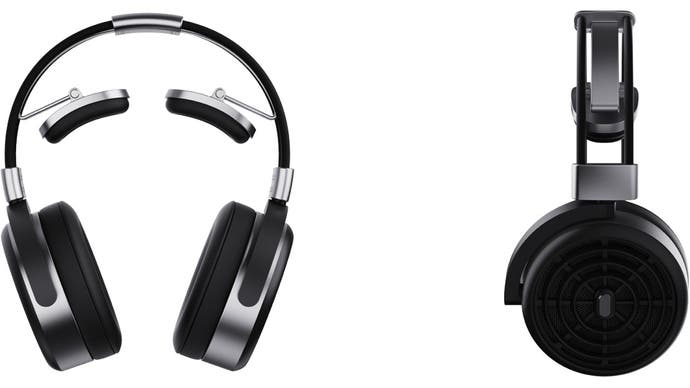
The best open-back gaming headset we've tested so far is the £161/$199 Sineaptic SE-1. These unusual headphones are built around a rare dual ribbon driver, in contrast to more common dynamic or planar magnetic drivers. The advantage is that the ribbons tend to move quicker than other driver types, allowing for quite detailed and indeed rapid reproduction. This is reflected in the sound of the SE-1, which I'd describe as 'gently v-shaped', with tight if slightly lean bass, clear mids and beautiful, dynamic treble.
Of course, as open-back headphones, you have almost no isolation from your environment and vice versa, so these aren't suitable for use in a shared space, but good if you want to listen out for your family members / delivery people while using the headset.
While they operate over Bluetooth (via AAC for Apple devices or SBC for PC/Android) , I'd recommend using them with the included 3m-long 3.5mm cable as wired headphones for gaming, in order to maximise sound quality and minimise latency. Annoyingly, the headset still requires power in 3.5mm mode, so you'll need to top it up via USB-C every once in a while. There's no boom mic either, and I was only able to get the mics integrated into the earcups to work via Bluetooth - so you may want to consider a dedicated XLR or USB mic or adding a ModMic.
The industrial design here is also unorthodox, with a pair of moveable cushioned 'wings' that serve as a headband. This makes for quite a bulky design, but the plastic construction and resultant 400g weight is far from the heaviest headset we've tested and the headset is comfortable enough for hours of use at a time. This bulky approach also applies to the packaging, with the SE-1 arriving in a carry case that's suspended on elastic tethers within a much larger box to prevent damage during shipping - not exactly convenient for recycling.
While the SE-1 have their share of drawbacks, the overall audio quality for the price is impressive and these could be a clever choice for anyone that intends to use the same headset for both gaming and critical listening. I'd love to see a follow-up that packages the same drivers in a more traditional gaming headset form factor - now those could be extraordinary.
Best in-ear gaming headset: Sony Inzone Buds
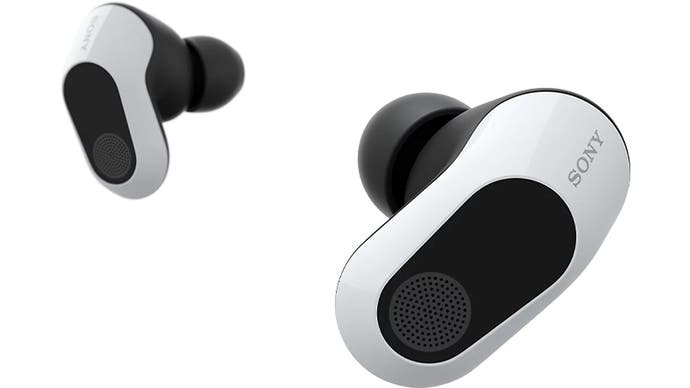
The £179/$198 Sony Inzone Buds WF-G700N are something quite special: a proper set of wireless in-ear headphones tuned for gaming. While we normally associate these Airpods-style headphones with Bluetooth, the Inzone Buds are intended to be used with a USB-C dongle, unlocking a lower latency (30ms) 2.4GHz connection for PC, PlayStation consoles and Android. Bluetooth is also supported, but the in-ears are only compatible with a handful of recent Sony phones that support Bluetooth LE Audio (LC3) - more commonly available SBC, AAC, aptX and even LDAC aren't supported.
I tested the headphones in competitive Counter-Strike 2 matches on PC and found the link remained stable with no discernible delay compared to a wired headset. And while these in-ears have an expectedly narrow sound stage, the reasonable imaging here helps with locating enemies by the sound of their footsteps. Otherwise, the sound is impressive, as you'd hope from a Sony audio product, with slightly over-emphasised bass, rich mids and crisp highs. You can change EQ profiles via the Sony Inzone Hub app for PC, which works well and includes all of the options I'd hoped for.
In terms of isolation, the in-ear design and active noise cancellation means there's little sound leakage in either direction, allowing you to concentrate on your game and block out distractions. The ANC here is the best I've experienced on in-ear headphones, blocking out not only low rumbles from airplane engines but also speech. The isolation does require a good fit with the ear buds, with three different sizes provided in the box. I found the in-ears comfortable to wear for hours on end, and battery life is also impressive at up to 12 hours.
The only negatives I can really mention are the relatively premium price, the bulky charging case that at least houses the USB-C dongle and the absence of Bluetooth compatibility with the vast majority of Android smartphones, requiring the USB-C dongle to use with my Pixel 6. The touch controls are also a little too easy to trigger accidentally, and the most important shortcut - swapping between Bluetooth and USB by pressing both earbuds simultaneously - isn't mentioned in the manual until page 61.
Overall though, there's a lot to like here - the Inzone Buds are comfortable, long-lasting and sound great, with impressively low latency and great noise isolation - so they come highly recommended for gaming.
Alternatively, consider the considerably cheaper £70/$65 Edifier Neobuds Pro. These in-ears offer a somewhat low-latency (80ms) gaming mode over Bluetooth, no USB-C dongle required. The sound reproduction here is impressive, thanks to the combination of an armature for bass and a dynamic driver for mids/treble. These units also offer active noise cancellation - including several strength levels and an 'ambient' mode to let in external noise - but they're not as effective as Sony's offering.
Frequently questioned answers
Is it worth using 5.1 or 7.1 surround sound?
It depends. If you want to immerse yourself in a game or movie, the virtual surround sound mode offered on many gaming headsets can be fun to play with. You can even add surround sound processing to headphones that don't come with it on PCs running Windows 10 and the Xbox One using Windows Sonic or Dolby Atmos for Headphones. However, if you're looking at surround sound to gain a competitive advantage, my recommendation is to keep surround sound disabled - the processing that tries to fake surround sound often makes it harder to hear footsteps or other quiet audio cues, adds delay and tends to remove detail. Instead, look for headphones with a wider audio stage, eg many open-back headphones, as this will actually make it easier to place your enemies on the map based on the noises that they're making.
Should I get wireless headphones?
Wireless headphones give you a lot of freedom, so you can make yourself a sandwich in the kitchen or sit on the opposite side of the couch without worrying about taking off your headset or rerouting its cables. However, you will need to recharge your wireless headset every few days or weeks, and it's certainly annoying when your headphones go dead mid-firefight. If you tend to sit in different positions while gaming or just hate being tethered to your desk, wireless is a sensible choice; otherwise, save the money and the hassle of recharging and get wired headphones instead.
What brands should I consider?
This is no by no means an exhaustive list, but headphones from HyperX, SteelSeries and Sennheiser tend to be well-respected. Razer, Logitech, Turtle Beach and Astro have also made some great headsets in their day, although they've also produced a few relative stinkers as well. Ultimately though, gaming headsets can vary massively from model to model, so it's best to look for reviews on the headset you're considering rather than shopping by brand alone.
Why do headsets that work for PS4, PS5 or PC not work for Xbox?
Largely because PlayStation 4/5 and PC support connection options that the Xbox One does not. The PS4 and PC both support headsets that connect via 3.5mm (either dual 3-pole or 4-pole), optical, Bluetooth and USB. Meanwhile, the Xbox One didn't include 3.5mm on its first-generation controllers, requiring the use of an Xbox One Stereo Headset Adapter to add this option. The Xbox also only works with certified USB devices and uses its own proprietary wireless standard rather than Bluetooth, so you'll need to look for headsets that are specifically marketed as Xbox Series or Xbox One compatible. The final option is getting a headset that connects via optical (S/PDIF), although this isn't available on the Xbox Series X or S. We've marked the connection options for each headset we recommended above for your information.
How can I improve the sound of my existing headphones?
Good and totally not just made up question! A lot of this comes down to personal preference, but we prefer to turn off audio "enhancements" like surround sound and aggressive equaliser settings; you want things to be as "bare metal" as possible if you trust in the intent of sound engineers and headphone designers alike.
From there you can use a DAC, which takes audio processing duties off your PC or console and entrusts it instead to dedicated hardware which tends to do a better job, removing jitter and changing other characteristics for the better. Desktop or portable DACs like the Audioengine D1 or the Fiio E10K cost around £100/$100 and can improve audio quality substantially. You can check out our full picks for the best gaming sound cards too.
What about speakers?
We've added a round-up of the best computer speakers from £50 to £250 here.
